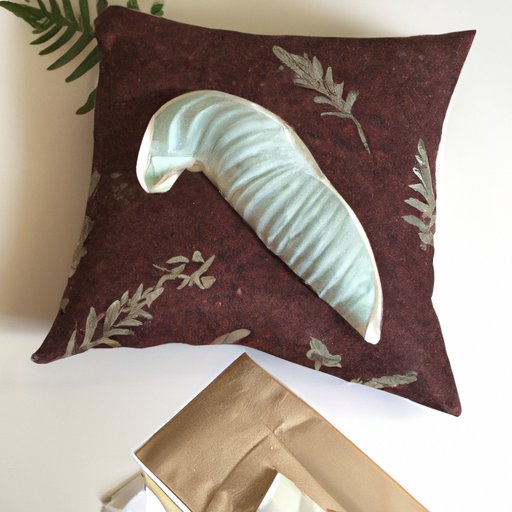
I. Introduction
Heating pads are an effective solution to relieve sore muscles and aches, but purchasing one can be expensive. An affordable, environmentally friendly and creative alternative is making your own heating pad at home. Through this article, we will cover everything you need to know to create your own heating pads with different materials, methods and even with essential oils!
II. DIY Heating Pad: How to Make Your Own at Home
The basic recipe for making a heating pad at home uses either flaxseed or rice. For materials, you will need:
- Two pieces of fabric that are 10 x 10 inches or bigger, depending on how big you want your pad to be
- Half a cup to one cup of rice or flaxseed
- A sewing machine
Once you have acquired the materials, follow these simple steps:
- Cut the fabric into two equal pieces
- Sew three of the sides together with a sewing machine (leave one side open for filling up with rice)
- Fill the fabric bag with rice or flaxseed
- Sew the final side closed
- Heat in the microwave for 1 to 2 minutes and it’s ready for use
III. Eco-Friendly Heating Pad: How to Upcycle Old Materials
A sustainable alternative to buying new materials for your heating pad is upcycling old fabrics. You can use an old T-shirt, sock, or a towel to create a heating pad.
Here are the steps:
- Cut two fabric pieces with the same size you prefer
- Sew three sides together by hand or with a machine
- Fill it with rice or flaxseed and sew the fourth side closed
IV. Aromatherapy Heating Pad: How to Make a Relaxing and Soothing Pad
For those who would like to boost relaxation and decrease anxiety symptoms, an aromatherapy heating pad may be your best option. Essential oils can be used to stimulate physical and emotional wellness.
Here are some calming essential oils you can use:
- Lavender
- Chamomile
- Eucalyptus
- Peppermint
- Vanilla
Here are the steps to making an aromatherapy heating pad:
- Follow the basic DIY heating pad instructions, but before filling it up add 10 to 15 drops of essential oil to the rice or flaxseed (you can add more or fewer drops, depending on the smell strength you want)
- Mix it well
- Close up the heating pad final side
- Heat it in the microwave for 1 to 2 minutes
V. Microwaveable Heating Pad: How to Make a Quick and Easy Pad
If you don’t have the equipment to sew, a simple and fast option is to create a “no-sew” microwaveable heating pad:
Here are the materials:
- A large sock or durable fabric
- Uncooked rice, beans, or flaxseed
Here are the steps:
- Fill the sock with your grain of choice about halfway
- Twist the sock or fabric tightly
- Microwave for about 30 seconds
- Flip around and microwave for another 30 seconds.
- Check if the temperature is comfortable [consider putting a cloth between it and your body to prevent discomfort]
VI. Creative Heating Pad: How to Make a Fun and Unique Pad
Want to include an artistic touch to your heating pad? You can add colors, shapes or even make it look like your favorite pop culture reference. Fabric and felt are recommended for this style.
Here are the steps:
- Cut out the shape you want (you can create a template before cutting)
- Sew three sides of the shape, leaving an open flap
- Fill it with rice or flaxseed
- Sew the final side closed
- Heat in the microwave for 1 to 2 minutes and it’s ready for use
VII. Conclusion
Making your own heating pad is an easy, cost-effective and potentially creative solution for soothing aches and pains! From simple to sophisticated, we have covered options that use new materials, upcycle old fabrics, add essential oils, microwaveable or that call for creative accents. Now it’s time to let your imagination run wild.




